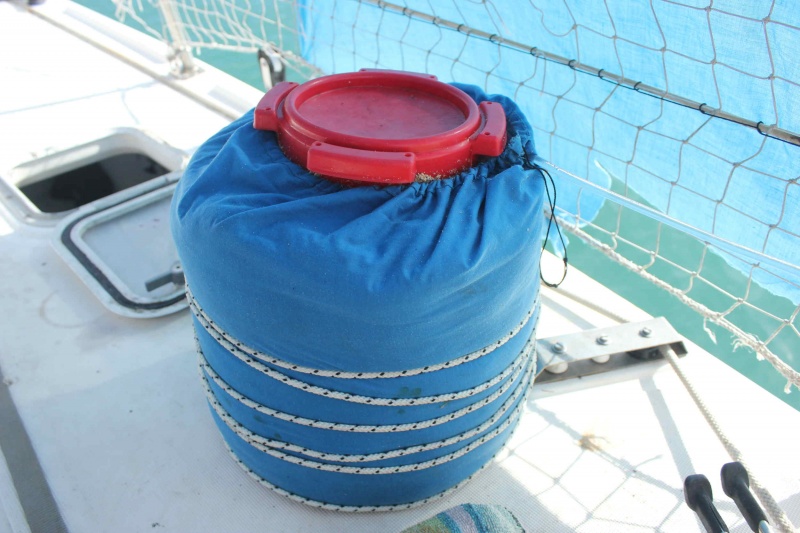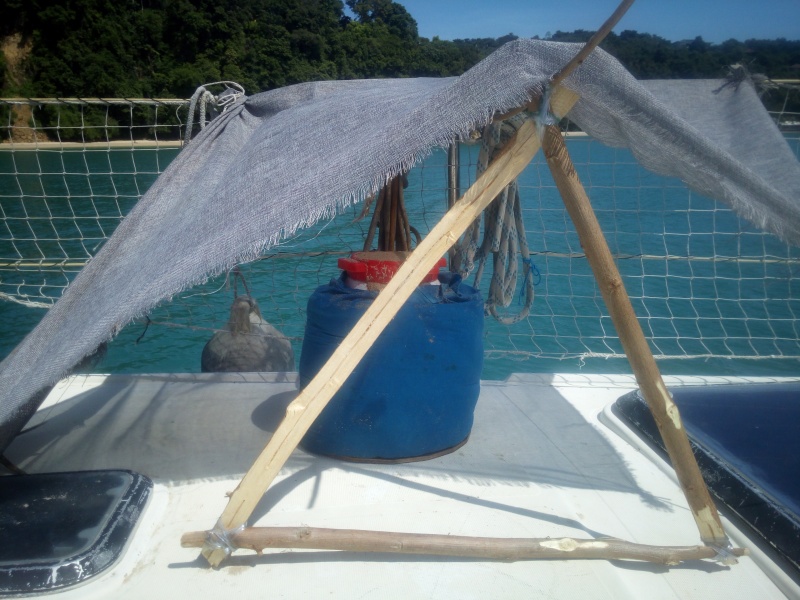(Page créée avec « Making (or finding) a cylindrical bag allowing the introduction of the container surrounded by 5 centimetres of sand under it and around it. Providing a slide and enough f... ») |
(Page créée avec « Reinforcing the bottom of the bag with a board previously cutted in circle. Laying 5 centimetres of sand. Laying the container. Filling the sand on the side by pressing it... ») |
||
| Ligne 38 : | Ligne 38 : | ||
{{ {{tntn|Tuto Step}} | {{ {{tntn|Tuto Step}} | ||
|Step_Title=Sand filling | |Step_Title=Sand filling | ||
| − | |Step_Content= | + | |Step_Content=Reinforcing the bottom of the bag with a board previously cutted in circle. Laying 5 centimetres of sand. Laying the container. Filling the sand on the side by pressing it. Filling the sand as high as possible. Once the sand has been filled and pressed, a string or a wire can surround the bag from the outside in order to strengthen the setting. |
}} | }} | ||
{{ {{tntn|Tuto Step}} | {{ {{tntn|Tuto Step}} | ||
Version du 22 février 2018 à 20:55
Description
A traditional zeerpot (or desert fridge) made with terra cotta pots quickly becomes heavy and difficult to carry around. The version presented here is a lighter and less expensive variant, feasible with materials that can be more easily found. The envelope is made out of fabric. The container can be in plastic, metal or any other sand-proof material. This container can be closed with a plug/cover or a fabric.
Matériaux
- Container of the desired size, either in plastic either in any other sand-proof material
- Fabric with a thin stitch
- Board, either in wood either any other material
- Little plastic hose with a tap
- Bottle of 5 or 6 litters
- Sand
Outils
- Scissors
- Needle
- Thread
Étape 1 - External envelope
Making (or finding) a cylindrical bag allowing the introduction of the container surrounded by 5 centimetres of sand under it and around it. Providing a slide and enough fabric height to be able to close the bag around the container.
Étape 2 - Sand filling
Reinforcing the bottom of the bag with a board previously cutted in circle. Laying 5 centimetres of sand. Laying the container. Filling the sand on the side by pressing it. Filling the sand as high as possible. Once the sand has been filled and pressed, a string or a wire can surround the bag from the outside in order to strengthen the setting.
Étape 3 - Dripping
Percer le tuyau de quelques trous d'aiguille à coudre et prévoir un robinet de sortie pour pouvoir siphonner l'arrivée d'eau. Faire faire un cercle au tuyau percé autour du bidon, pour que l'eau se répartisse uniformément dans le sable lors de l'utilisation. Prévoir un robinet pour régler le débit.
Étape 4 - Using
Suspendre une réserve d'eau en hauteur et siphonner. Régler le débit comme bon vous semble, en fonction du vent et la température. Le contenu du bidon sera maintenu au frais ! Le zeerpot doit être placé à l'abri du soleil dans un endroit venté.
Étape 5 - On-going tests
This zeerpot model is being tested on the boat of Nomade des Mers. It is tested :
- the dropping intensity
- the internal and external temperatures measurement
- the inertia
Notes et références
- Made by Thomas Piboum and Karel Janik for Nomade des Mers
Yes


 Français
Français English
English Deutsch
Deutsch Español
Español Italiano
Italiano Português
Português